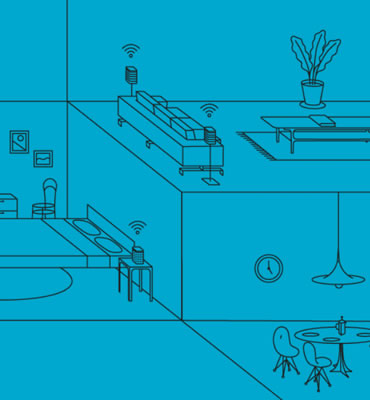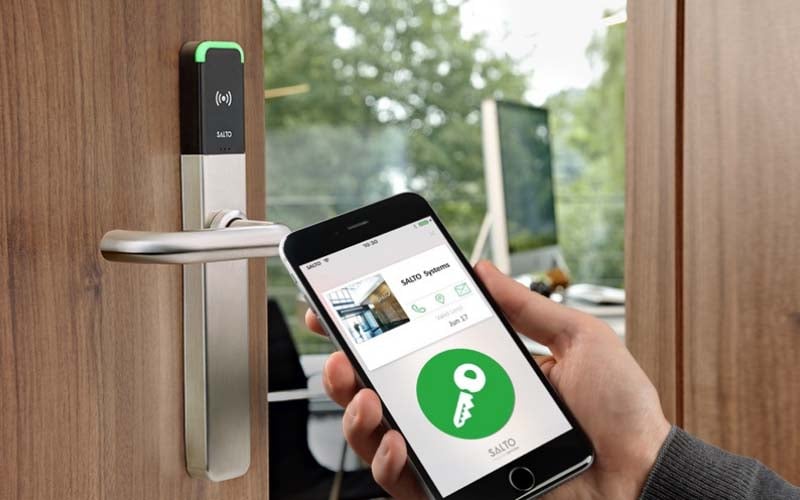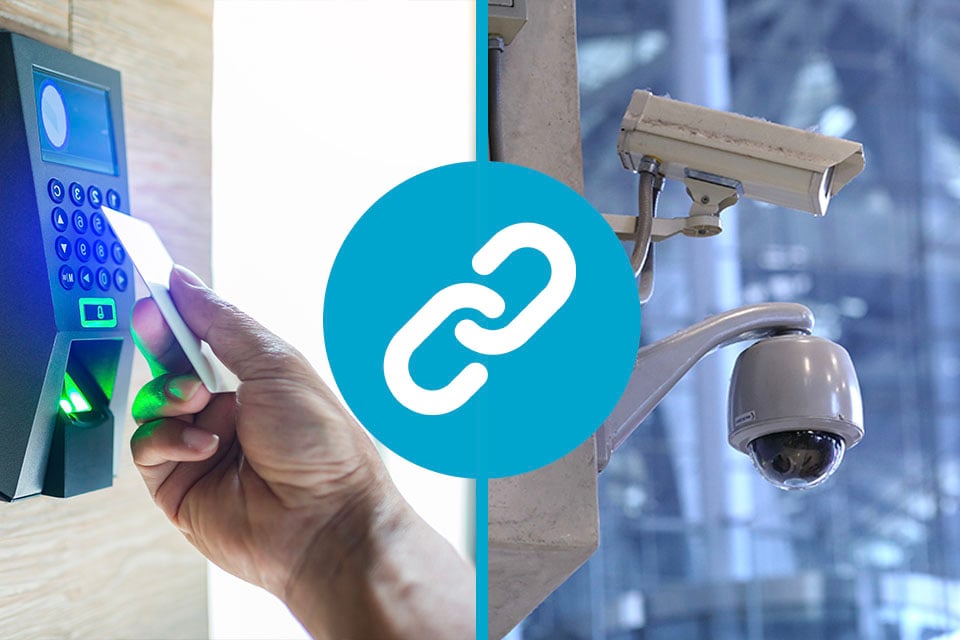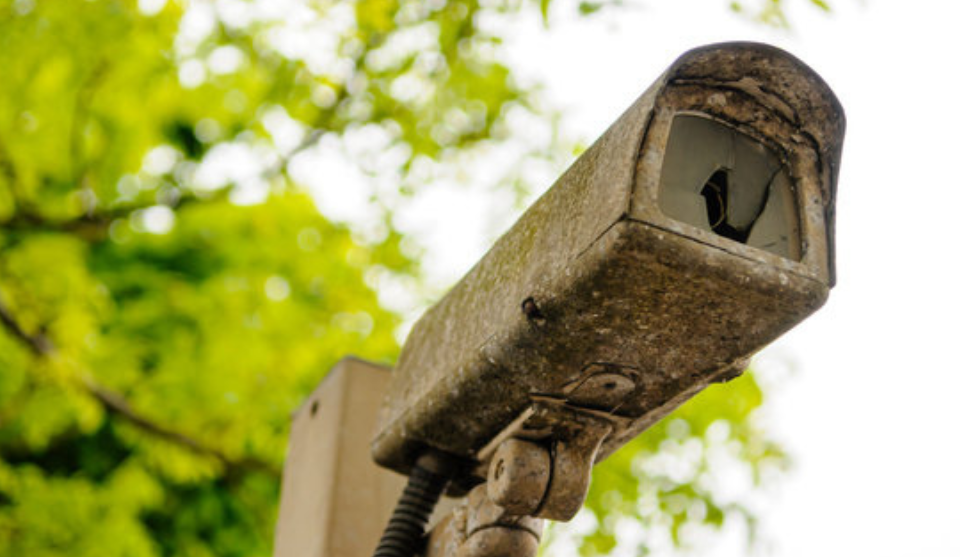If you're working from home, experiencing WiFi problems can be worse than having no hot water. Speed and connectivity is everything.
This has become especially important since lockdown. With many more people working from home as standard, slow WiFi can be maddening.
Jump To
Whether it’s during work and school hours, or when you’re trying to FaceTime your friend while your kids are on the PlayStation, slow internet connection can be extremely frustrating. However, you’ll be glad to hear there are ways to fix this!
We’ve put together 5 tips to help you understand the factors that affect your home WiFi speeds. From passwords to IP addresses, we've got you covered.
How to Fix Slow WiFi
Here are our suggestions of the top 5 things you can do to improve your WiFi speed:
- Test Your Internet Speed
- Test Your WiFi Coverage
- Ensure Your Internet Router Is New
- Don't Rely on WiFi Extenders
- Consider Upgrading to Mesh WiFi
1. Test Your Internet Speed
The first step is to run a speed test to check the WiFi signal strength of your devices. To do this, you can simply Google ‘WiFi speed test’ or download the phone app Speed Test which will allow you to test your speed and broadband connection with ease. Another good website to use is Ookla.
Check that the upload and download speeds you are getting on the test apps are close to what you paid for from your internet provider (usually shown on your bill or online account). As a rule, you should be looking for about 10Mbps download speed for each user in the house, though this will depend on each person's internet usage. An important thing to note when doing your speed test is to make sure no one else is using the internet, and nothing is running in the background, so you can test the speed at its full capacity.
First, perform a test when stood beside your broadband router. If you are getting around half the speed or more of what your Internet service provides, you’re looking good. Nowhere near the quality of service you pay for (especially if you have a fiber optic connection)? Try a different device (maybe another laptop or smartphone) and re-test. If you are still miles off, it is possible to plug in to your router from a laptop (you will need a network card and cable) and test again with this wired connection to make sure your broadband service is performing as it should.
These speed test results allow you to see how good your raw wireless connection signal is and which bandwidth hogging devices may be altering its potency. It'll help you to establish where the problem with your wireless network lies and why you have slow internet speeds.

2. Test Your WiFi Coverage
It’s also a good idea to test your coverage in different areas of the house. For this, you can use the same app as above. Wi-Fi speeds can be affected by the structure of your property. Stone walls, steel, and even underfloor heating can impact your internet access.
If you live in an old stone cottage, the walls of your home might be much thicker than a modern home. This can reduce the bandwidth and connection speed as the wireless signal struggles to pass through. Certain areas of your home may experience the Wi-Fi connection slowing because of steel supports and fireplaces. Anything dense or metal within a direct line of the router to your device will block or reduce the signal. Draw an imaginary wire pulled tight from the router to your device and think about what is in the way, that’s what the signal must pass through. If your home falls into any of these categories you may have to move your router.
Many homeowners struggle with static types of internet-connected devices such as Smart TVs, Apple TV or streaming music players. Routers broadcast a limited range around their location. If you’re having trouble with these not connecting to the WiFi, you might need to rethink the position. If, for example, your router is in your study but your Smart TV is in your bedroom at the other end of the house, the Wi-Fi coverage will naturally be weaker. If you can’t move your Smart TV, it might be time to rethink your WiFi solution and opt for a smarter option.

3. Ensure Your Internet Router Is New
A common problem homeowners have with their WiFi is that their router is just too old. WiFi connections are always improving with new modem and router packages. You need to stay on top of the latest technology to have the best signal with high speed. Sudden slowdowns in WiFi speed may be due to an outdated router.
The WiFi technology in use has changed seriously in the last 10 years, with the introduction of 5GHz wireless. This frequency band provides the best speeds and more channels so that you are much less likely to interfere with your nearby neighbour's own WiFi systems.
Older 2.4 GHz wireless bands were limited to fewer channels and much slower speeds. A very common symptom is known as ‘Channel Hopping’ where older broadband routers will swap WiFi channels to avoid interference. This cuts everyone using the network off for a moment while they try and re-connect to the internet.
Upgrading to a 5GHz router will often remove problems with speed, disconnect, and coverage. If you’ve been with your internet provider for a while (over 18 months) they will upgrade your router for free if you renew your service!

4. Don't Rely on WiFi Extenders
Extenders are often people’s first go-to when their WiFi starts acting up. Often, it isn't actually going to solve your problems. These plug-ins can be a quick, cheap, and easy fix in some cases, but they're by no means the most effective.
Many Wi-Fi extenders make use of the mains wiring in the house to provide a network link. If the main unit and repeater unit are wired to the same socket ring-main these can be a quick fix too. But there are problems…
Mains are noisy, and you will of course have lots of different things plugged in all causing signal interference. For example, if you turn a heater on while trying to watch Netflix or other bandwidth heavy services it may well interrupt the signal.
This is especially important to consider for larger homes. Mains-based extenders aren’t able to perform as they're supposed to in bigger areas. Whilst advertised to give increased Wi-Fi coverage and performance throughout your home, extenders may do more harm than good. We’d recommend saving your money and opting for another solution that won’t just end up being thrown in a drawer!

5. Consider Upgrading to Mesh WiFi
The best way to improve your WiFi is to upgrade to a Smart Meshed WiFi solution. That's the bottom line. These systems offer huge reach and speed for your whole households and devices. All within a single system. Smart WiFi works by installing multiple, discreet ‘access points’ across your home. Now, we know what you’re thinking: ‘Isn’t this the same as extenders?’ The answer is no. Smart WiFi provides the same coverage as extenders, but without compromising on speed, coverage and drop-outs.
These systems use a ‘meshed’ network. The access points are placed around your house which are connected to the main router through either data cabling or wirelessly. With a meshed network, your WiFi learns and adapts to interference from other networks, meaning the coverage and speeds will work better for you! Plus, installation is simple with often no need for rewiring.
The system itself has the ability to find the best access point depending on where you are. Your devices connect quickly and remain connected as they only see one big single network. This means no channel hopping! If you’re worried about aesthetics, the access points can be hidden away out of sight and operate 24 hours a day boosting your signal and performance.
You will never compromise on speed, quality, or bandwidth with Smart Meshed WiFi.
Final Thoughts
A strong WiFi connection can open up a wide range of prospects within your home, such as the introduction of smart tech. Smart features from automated blinds to smart lighting and sound can elevate your home and aid you in your everyday life. Smart home technology is only continuing to develop and expand, and smart home devices can slow down your WiFi, especially as you add more of them to your property. Setting up the basics within your home will create endless uses for the right now, whilst also offering a foundation to add to in the future if you so wish.
We hope that these 5 points help to improve your home WiFi so you and your family can continue to stream, game, chat, work, and learn at the fastest speed. For more insights into how smart technology can take your home to the next level, be sure to subscribe to our newsletter and check out The Ultimate Smart Home Design Guide!
Have any further questions? Get in contact with us today and we'll get them answered!
Submit the form below and we will get back to you shortly.
.webp)
Tom Clarke
Related Posts
Chris Lewis Group Recognised as Exclusive Control4 Pinnacle Dealer
Chris Lewis Group Joins Exclusive Control4 'Pinnacle' Dealer Network The Chris Lewis Group is proud to announce its official recognition as a Control4 Pinnacle dealer, joining an exclusive group of.
What Is Smart Lighting & How Can it Benefit You?
Smart lighting is one of the most in-demand smart home features, and for good reason. If you want to add character and ambience to your home, it can make a huge difference without too much cost. But.
How Much Does a Smart Home Cost?
As experienced smart home installers, we often get asked one key question: How much will it cost? While design and installation costs will naturally vary from project to project, we understand that.








